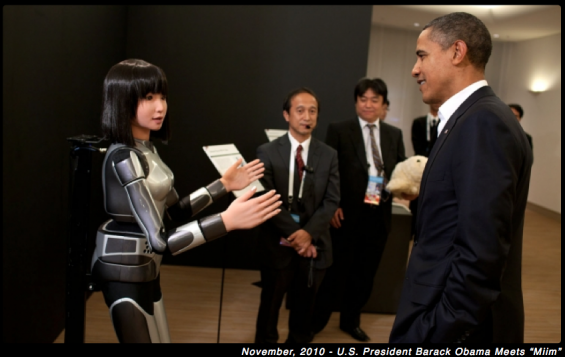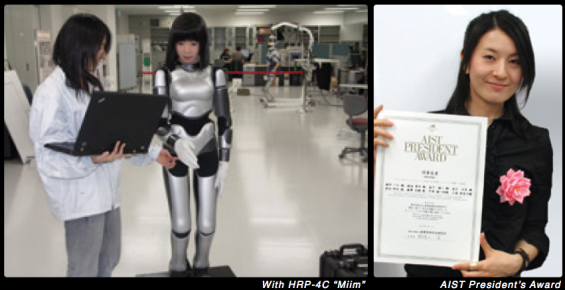 Welcome to Japanese Technology from the Future Friday!
Welcome to Japanese Technology from the Future Friday!
It’s already Friday west of the international dateline – here in Japan, it’s totally the future. The weekly JTFF is our somewhat technosnarky coverage of 2-5 particularly important, specifically Japan-related tech stories. Get yourself hip to the micro & macro that went down while North America was sleeping – check in every Friday morning and BOOM! Ahead of the game, you win.
Why Japan and J-Tech?
First, Anthrobotic has geographical superiority. In the future.
Second, Japan has lots of super hott (and odd) technology stuff going on.
Third, deliciously cathartic opportunities make fun of the Japanese invariably crop up.
• NHK’s Developing Touchable TV
The Japanese equivalent of American public network PBS, which apparently has some R&D cash laying around, is trotting out a bunch of new tech during an open house in Tokyo this weekend. Now, for some reason, no one’s calling this touchable TV “virtual reality,” but that’s kinda exactly pretty much mostly what it is – except in this case it extends to that place so often neglected in discussions of VR: haptics; the reality of touch. The basic workings seem to involve software that analyzes a 3D object and, coupled with a little robotic finger sleeve, delivers a high-res feedback equivalent to the remote viewer. Some readers might now be starting down an unsavory path for this technology, but that will not be discussed – you must provide your own conceptual context. We’ll follow up more on this tech next week.
[NHK’s TOUCHABLE TV – PC WORLD]
• NHK Has Even More Cash to Burn: 8K-Res Video
In addition the above, along with their buddies at Mitsubishi, NHK’s is also developing super-maybe-unnecesarily-high definition 8K cameras for television broadcasts. Such is the nature of technological leapfrogging – because 4K-capable stuff is just now hitting the market. Okay, but at some point we’re going to hit a point of… well, no diminishing returns, just a kind of point where resolution goes beyond our ability to perceive that it’s any better – anybody know how many Ks that would be? For moving pictures, it can’t be much higher than 8K… so, maybe we’ll just be able to take better screenshots?
[8K ULTRA-DEF SO ON AND SO FORTH – DIGINFO]
• Japan Giveth to Africa: New Malaria Vaccine is Awesome
Researchers at Osaka University have developed a malaria vaccine shown to cut infection rates by up to 72%; importantly, with no discernible ill effects. This is of course vital to the many African nations where malaria remains… well, malaria. The vaccine is several years from implementation, but such are the necessary cautions – more trials will clarify efficacy and safety, and more lives will be saved. One hopes people who attempt to shame developed nations for pouring cash into pure science and technology can appreciate just how much worse off the world would be if they didn’t – because there’s no malaria in Japan, dig?
[NEW MALARIA VACCINE DEVELOPED IN JAPAN – CHANNELNEWS ASIA]
• Japan Taketh Away from Africa While Givething (but not in a bad way probably)
JOGMEC, a Japanese governmental consortium with one of the more entertaining acronyms out there (Japan Oil, Gas and Metals National Corporation), is investing in a search for rare earth metals in Malawi. They’ve been at this game for 5+ years now, because apparently going to Africa is a better idea than going across the sea to China where most of the earth’s rare stuff is currently sourced. The giveth part of the equation is JOGMEC’s commitment to transferring technological know-how as part of the exploration and, one would assume, eventual extraction process. Also, try saying “JOGMEC” with a Japanese accent. Whee!
[JAPAN’S RARE EARTH EXPLORATION IN MALAWI – ALLAFRICA.COM]
That was the JTFF, and live from the future – that is all.
• • •












